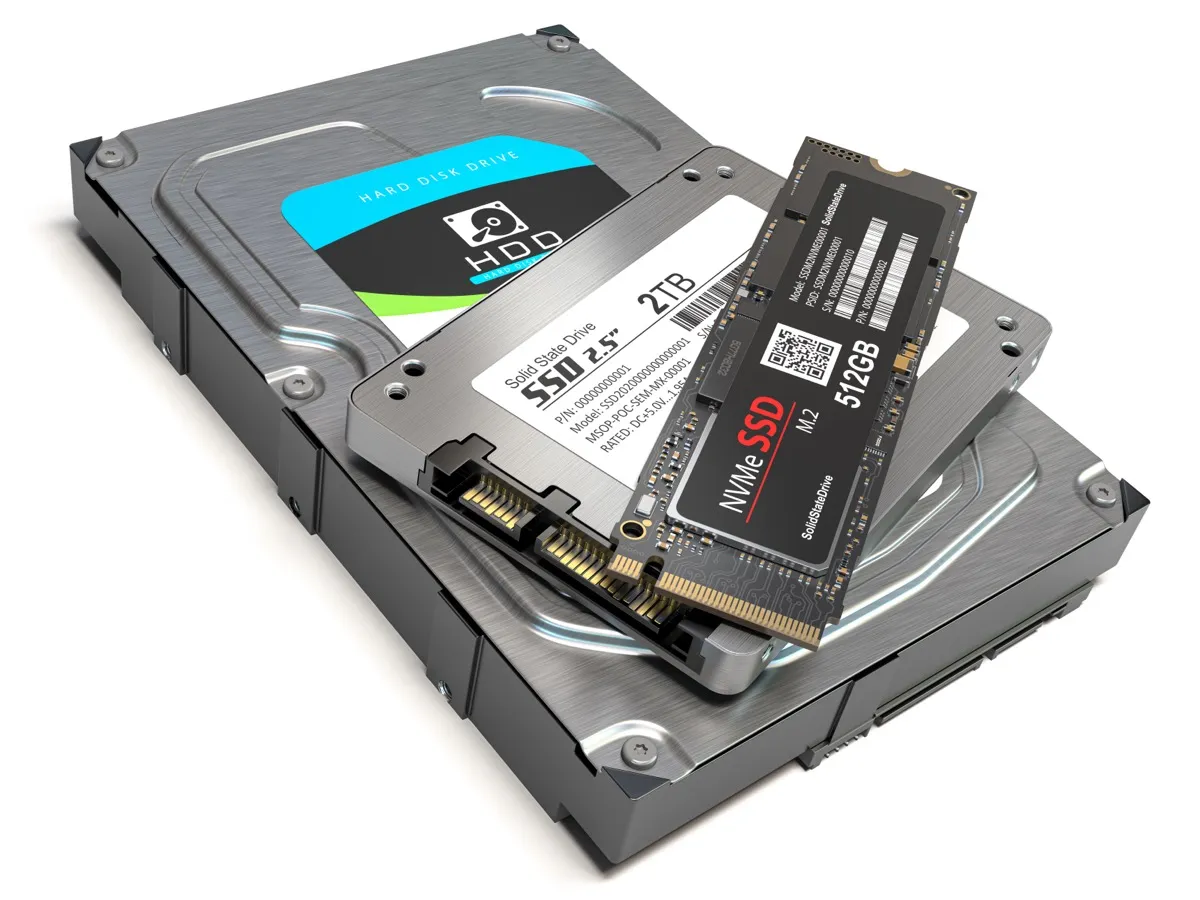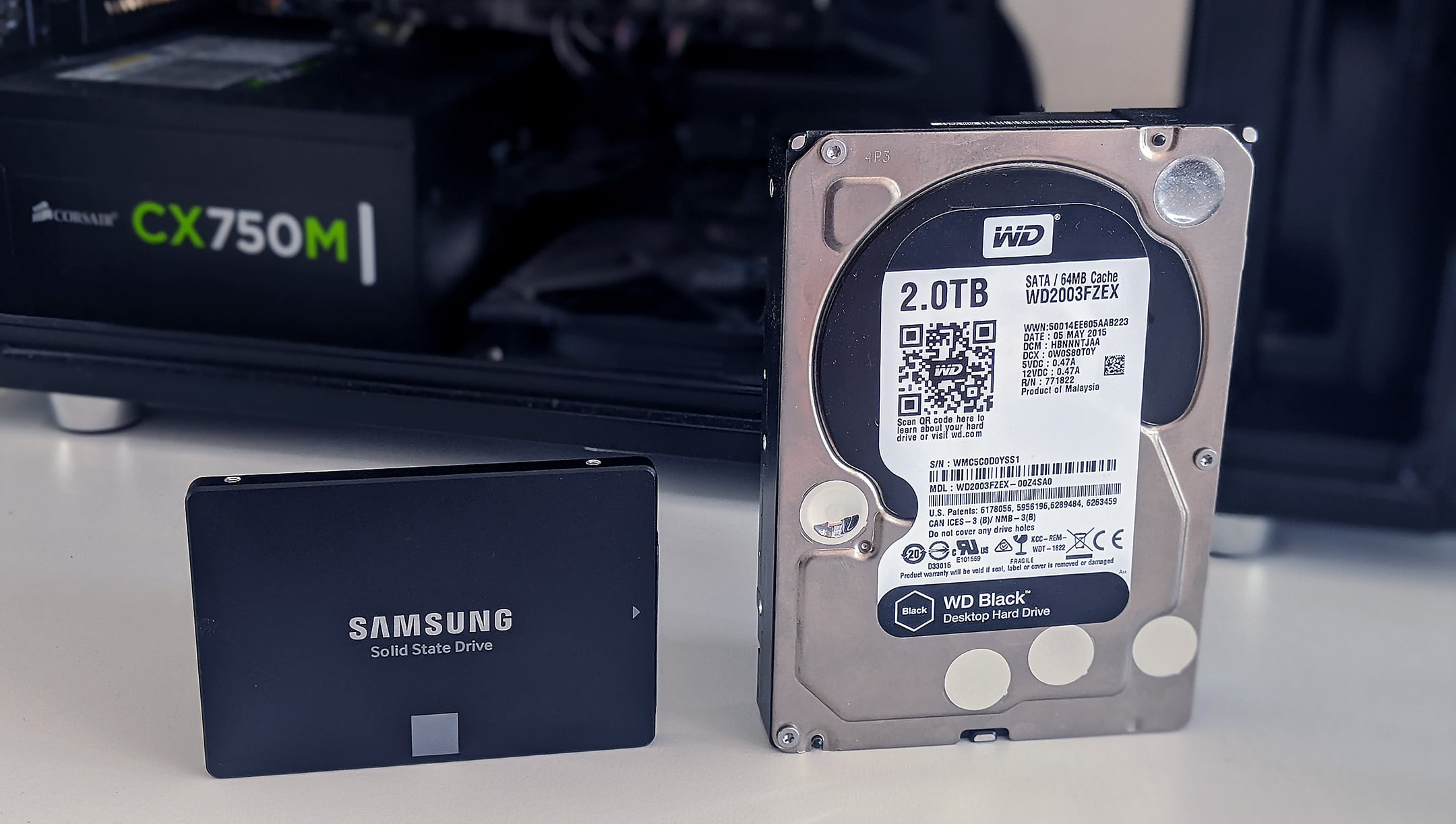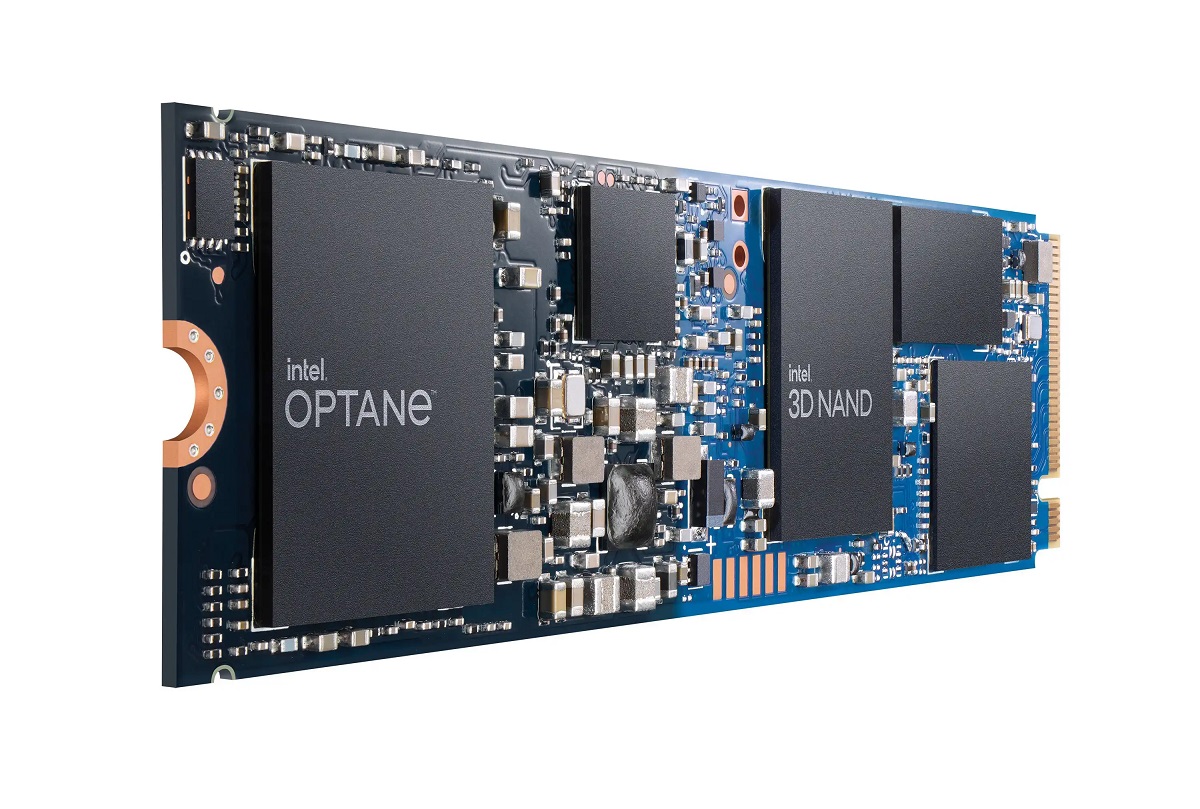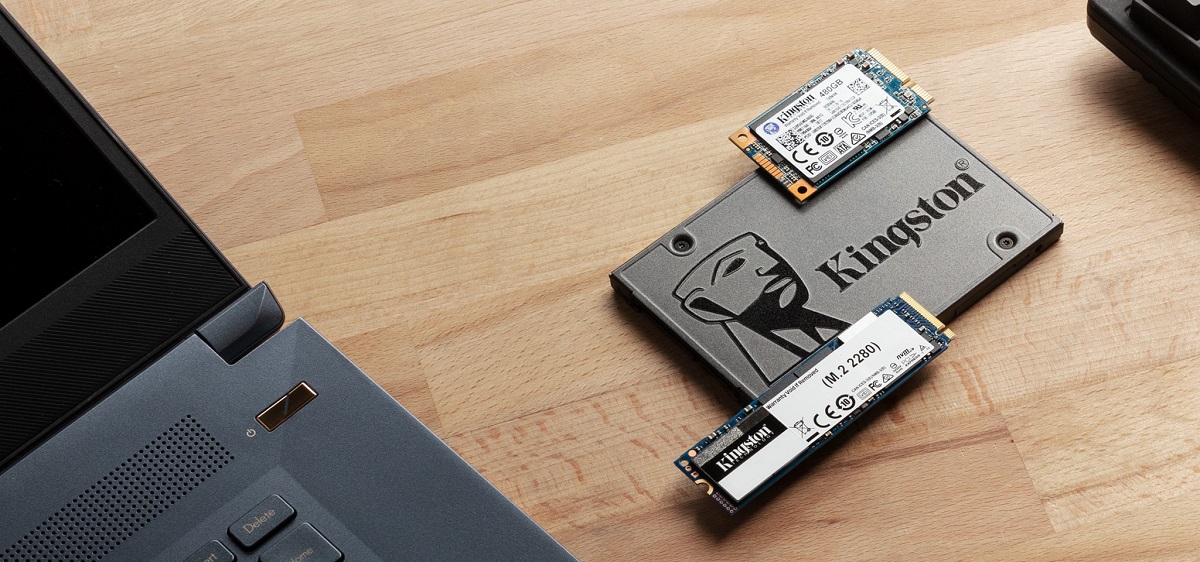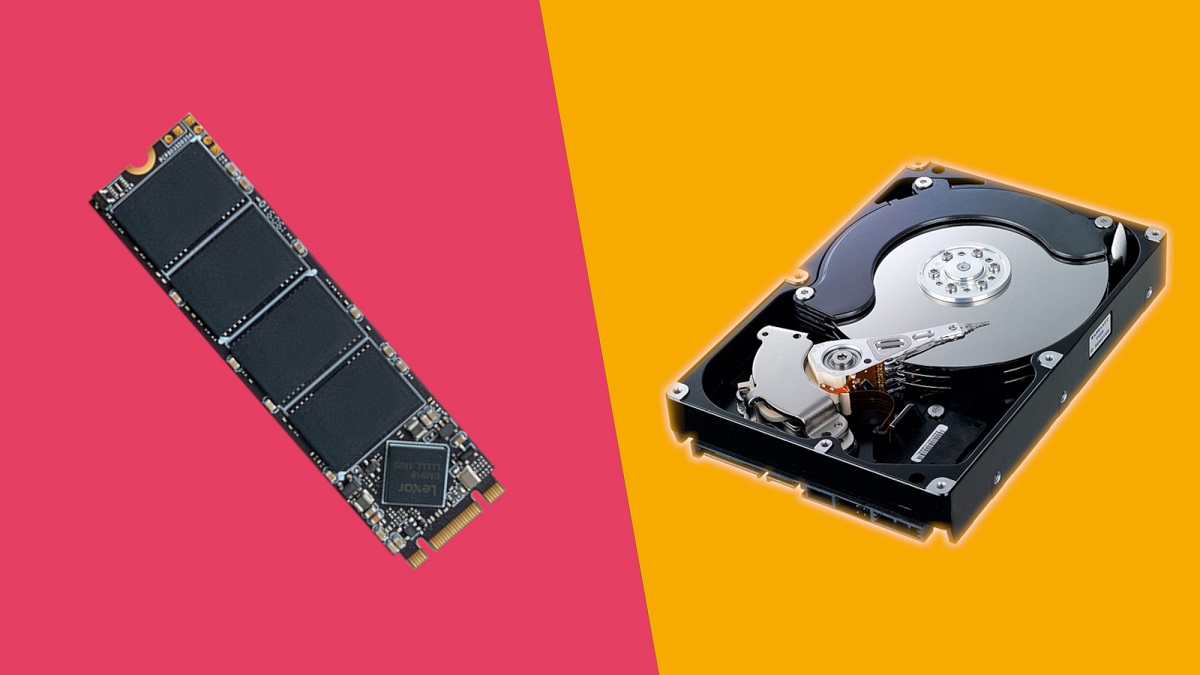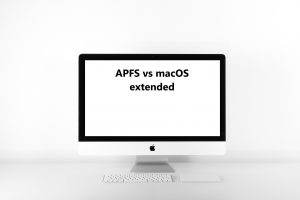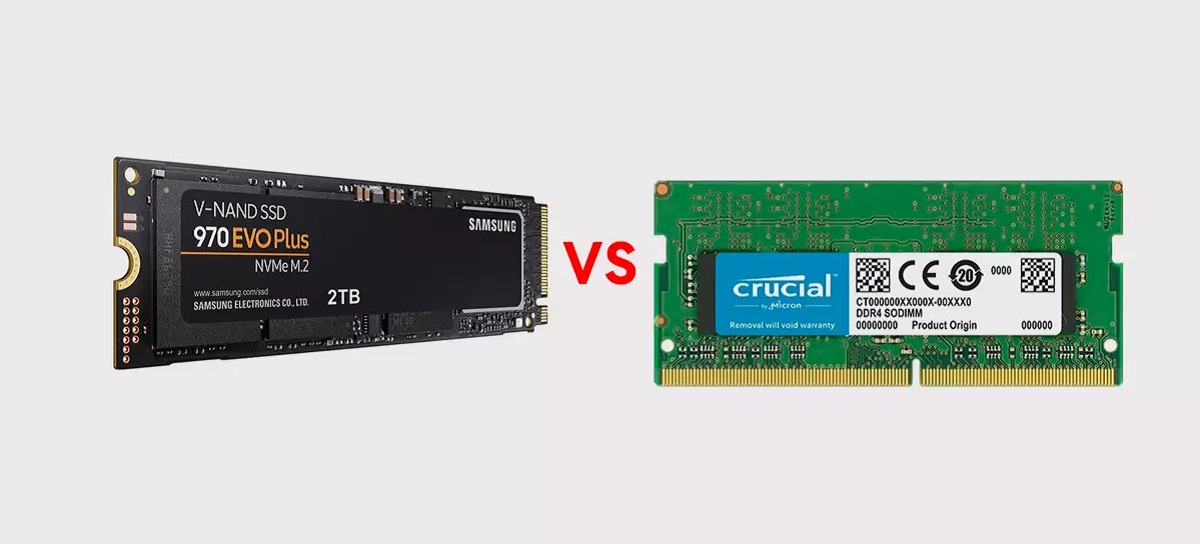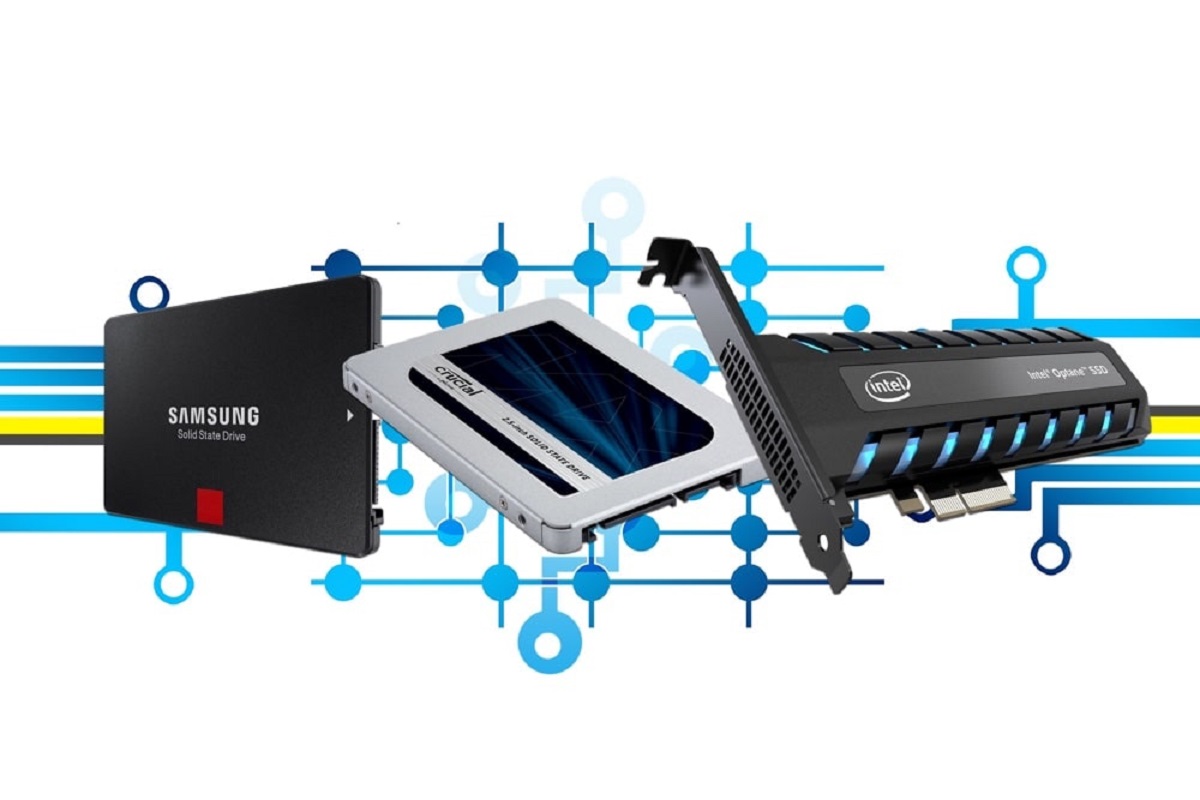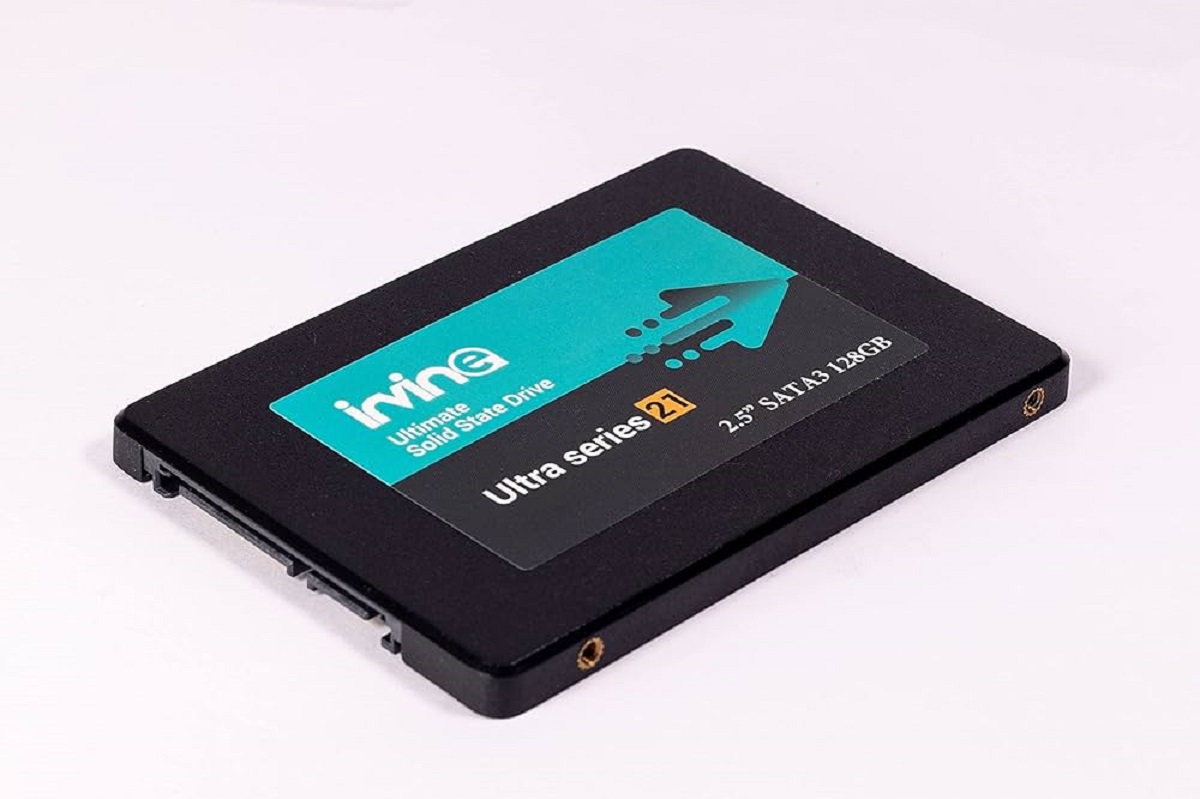Introduction
A common question among technology enthusiasts and computer users alike is the comparison between solid-state drives (SSDs) and hard disk drives (HDDs). As storage technologies continue to evolve, understanding the differences and advantages of these two options becomes increasingly important.
SSDs and HDDs serve the same primary function of storing and retrieving data, but they do so in different ways. In this article, we will delve into the world of storage devices to compare and contrast the speed and performance of SSDs and HDDs.
Traditionally, HDDs have been the go-to choice for storing vast amounts of data due to their affordability and high storage capacity. However, the emergence of SSDs in recent years has revolutionized the storage landscape, offering significant advantages in terms of speed and performance.
Before we delve into the specifics, it is important to understand the basic functionality of both SSDs and HDDs. By comparing their inner workings, we can better appreciate the differences in speed and performance.
What is a Solid State Drive (SSD)?
A solid-state drive (SSD) is a type of storage device that uses non-volatile memory to store and retrieve data. Unlike traditional hard disk drives (HDDs), which rely on rotating magnetic disks and mechanical read/write heads, SSDs utilize flash memory technology.
The key component of an SSD is the NAND flash memory, which is made up of interconnected memory cells. These cells are organized into blocks, pages, and cells, with each cell capable of holding multiple bits of data. This allows for faster data access and transfer rates compared to HDDs.
SSDs have no moving parts and are therefore more resistant to physical shock, making them ideal for laptops and portable devices. Since there are no disks or heads that need to spin and move to access data, SSDs offer faster read and write speeds, resulting in significantly shorter boot times and improved overall system responsiveness.
One of the main advantages of SSDs is their random access time, which refers to the time it takes to retrieve data from any location on the drive. Unlike HDDs, which need to physically move the read/write heads to the correct location, SSDs can access any data location with virtually no delay. This means that applications load faster, files are accessed more quickly, and the overall performance of the system is greatly enhanced.
SSDs also have a lower power consumption compared to HDDs, as they do not require the same mechanical components to function. This results in longer battery life for laptops and less strain on power sources in desktop computers.
However, it’s important to note that the storage capacity of SSDs is typically lower compared to HDDs, especially when it comes to higher capacity drives. SSDs may also have a limited number of write cycles before they start to degrade, although modern SSDs have significantly improved in this area with advanced wear-leveling algorithms.
What is a Hard Drive (HDD)?
A hard disk drive (HDD) is a traditional storage device that uses spinning magnetic disks to store and retrieve data. It consists of one or multiple disks, which are coated with a magnetic material, and a mechanical arm with read/write heads that move across the disk surfaces to access the data.
The data on HDDs is stored in concentric tracks, divided into sectors. When a file is saved, it is divided into small blocks and stored across different sectors on the disk. The read/write heads move rapidly to the desired track and sector, allowing for data retrieval and writing.
Compared to SSDs, HDDs offer larger storage capacities at a more affordable price point, making them a popular choice for storing vast amounts of data. HDDs also have proven reliability, with many models capable of serving for several years without any issues.
However, the spinning nature of HDDs introduces several limitations to their speed and performance. The mechanical components mean that the time required for data access is inherently slower compared to SSDs. The spinning disks and moving heads contribute to a longer boot time and slower application and file loading times.
Another factor to consider is the power consumption of HDDs, as they require more power to operate due to the mechanical movements involved. This can result in higher energy usage and shorter battery life in portable devices.
In terms of durability, HDDs are more susceptible to physical damage due to their moving parts. A sudden drop or impact can lead to data loss or corruption. Additionally, the mechanical nature of HDDs makes them vulnerable to wear and tear over time, potentially leading to failure or decreased performance.
Despite the limitations, HDDs remain a viable storage solution for many applications, especially when high storage capacity is required. They are commonly used in desktop computers, servers, and other devices where cost-effectiveness and ample storage space outweigh the need for faster data access.
How do SSDs and HDDs work?
While both solid-state drives (SSDs) and hard disk drives (HDDs) serve the purpose of storing and retrieving data, they utilize different mechanisms to accomplish this.
HDDs, also known as hard drives, rely on spinning magnetic disks and mechanical read/write heads. These disks are coated with a magnetic material that holds the data. When data is written to the drive, the read/write heads move across the spinning disks, magnetizing specific areas to represent the binary code of the data. When the data needs to be read, the heads locate the correct position on the disk and read the magnetic field to retrieve the information.
In contrast, SSDs use NAND flash memory to store data. NAND flash memory is a non-volatile storage technology that retains data even when power is disconnected. SSDs consist of multiple interconnected memory cells made up of floating-gate transistors. Each cell can hold multiple bits of data and is organized into blocks and pages.
When data is written to an SSD, the controller sends an electric charge to specific cells, either storing a charge (representing a 1) or erasing the charge (representing a 0). This process, known as program and erase (P/E) cycles, allows data to be written and erased from the cells. To read data, the controller measures the amount of charge in each cell and interprets it as binary data.
The lack of moving parts in SSDs gives them a significant advantage in terms of speed and performance. Since there are no spinning disks or moving read/write heads, data can be accessed almost instantly, resulting in faster boot times, quicker application loading, and speedy file transfers. Additionally, the random access time of SSDs is much faster compared to HDDs, as there is no physical movement required to access data from different locations on the drive.
While SSDs offer superior speed and performance, they have a finite number of write cycles before the flash memory cells start to degrade. To mitigate this, SSDs employ wear-leveling algorithms that distribute write operations evenly across the memory cells, ensuring longevity and preventing premature wear.
In summary, HDDs work by using spinning magnetic disks and mechanical read/write heads to store and retrieve data, while SSDs utilize non-volatile NAND flash memory and electronic circuits to accomplish the same task. The absence of moving parts in SSDs contributes to their faster speeds and improved performance compared to HDDs.
Speed and Performance Comparison
When comparing the speed and performance of solid-state drives (SSDs) and hard disk drives (HDDs), it becomes evident that SSDs have a significant advantage in several key areas.
One of the most notable differences is boot time. Due to the lack of mechanical parts and faster data access, SSDs boot up much faster than HDDs. In fact, SSD-based systems can start up in a matter of seconds, while HDD-based systems typically take several minutes.
File transfer speed is another area where SSDs excel. Whether you are copying files, moving data between folders, or transferring large media files, SSDs offer substantially faster file transfer rates compared to HDDs. This means that tasks such as backup, file synchronization, and multimedia editing are completed in a fraction of the time.
The load time of applications is significantly reduced on SSDs. Since SSDs have faster random access times and read speeds, launching applications is nearly instantaneous. This translates into a more seamless user experience and increased productivity, especially for applications that require frequent access to data.
In the gaming world, SSDs provide a noticeable advantage. Games installed on SSDs load much faster, reducing waiting times for levels to load and allowing players to jump into the action quickly. Additionally, SSDs can provide smoother gameplay with reduced lag, as game assets can be accessed more rapidly.
Power consumption is another aspect in which SSDs outshine HDDs. SSDs require less power to operate, resulting in lower energy consumption and longer battery life for laptops and portable devices. This is especially valuable for users who require their devices to last longer on a single charge.
Durability and reliability are also important factors to consider. SSDs, with their lack of moving parts, are more resistant to physical impact and damage compared to HDDs. This makes them a preferable choice for users who are constantly on the move or have devices that may be subject to accidental drops or shocks.
However, it’s worth noting that HDDs still have some advantages over SSDs. In terms of cost per storage capacity, HDDs are generally cheaper, especially for higher capacity drives. This makes them more suitable for users who require a large amount of storage space at an affordable price.
In summary, SSDs offer significant speed and performance advantages over HDDs. They have faster boot times, quicker file transfer speeds, and shorter application load times. SSDs also consume less power, offer increased durability, and provide a superior gaming experience. However, HDDs are still a cost-effective option for users who need large storage capacities. Ultimately, the choice between SSDs and HDDs depends on individual needs and preferences.
Boot Time
One of the most noticeable differences in speed and performance between solid-state drives (SSDs) and hard disk drives (HDDs) is the boot time. Boot time refers to the time it takes for a computer system to start up and become operational from the moment it is powered on.
SSDs have a significant advantage in boot time compared to HDDs. This is primarily due to the absence of moving parts in SSDs, which allows for faster data access and retrieval. When you power on a computer with an SSD, the system can start up in a matter of seconds, with the operating system and all necessary components loading swiftly.
In contrast, HDDs have mechanical parts that need to spin up and read data from the rotating disks when the system is powered on. As a result, HDD-based systems typically have longer boot times compared to their SSD counterparts. It is not uncommon for HDD-based systems to take several minutes from the time you press the power button to when the system is fully operational.
The difference in boot time between SSDs and HDDs can be particularly noticeable in scenarios where time is of the essence, such as when restarting a computer for software updates or when booting up in a business environment where efficiency and productivity are crucial.
Shorter boot times provided by SSDs can also be beneficial for users who frequently turn their devices on and off, such as travelers or professionals who need quick access to their systems during meetings or presentations. By reducing boot time, SSDs allow users to be up and running in seconds, minimizing downtime and maximizing productivity.
Additionally, faster boot times provided by SSDs contribute to an overall improved user experience. The speed and responsiveness of a system from the moment it is powered on can set the tone for the rest of the computing session. With SSDs, users can quickly transition from power-on to performing tasks, resulting in a more efficient and seamless workflow.
In summary, SSDs outperform HDDs in terms of boot time. The lack of mechanical parts in SSDs enables faster data access, allowing systems to start up within seconds. This shorter boot time can greatly improve user experience, efficiency, and productivity, making SSDs an appealing choice for those seeking a speedy and responsive computing experience.
File Transfer Speed
When it comes to file transfer speed, solid-state drives (SSDs) have a significant advantage over hard disk drives (HDDs). The superior performance of SSDs in this aspect can be attributed to their flash memory architecture and lack of mechanical parts.
SSDs utilize NAND flash memory technology that allows for fast and direct access to data. As a result, they offer blazing-fast file transfer speeds, whether you’re copying files, moving data between folders, or transferring large media files.
Compared to HDDs, which rely on spinning disks and mechanical read/write heads, SSDs exhibit much quicker read and write times. With no moving parts, SSDs can retrieve data almost instantly, dramatically reducing the time it takes to transfer files.
When copying files from one location to another, SSDs can achieve speeds that are several times faster than HDDs. This means that tasks like backup, file synchronization, and data migration can be completed in a fraction of the time when using an SSD.
SSDs are particularly beneficial when dealing with large files, such as high-resolution images, videos, or complex software installations. Transferring these files to an SSD can be much quicker compared to an HDD, allowing you to spend less time waiting and more time working or enjoying your media.
The increased file transfer speed of SSDs also has implications for productivity and workflow. Whether you’re a professional working with large datasets, a content creator handling high-definition media files, or a gamer downloading and installing games, the faster file transfer speed of SSDs enables you to complete tasks more efficiently and with minimal waiting time.
It’s important to note that while HDDs may still transfer files at a reasonable speed, they cannot match the sheer performance and responsiveness of SSDs. The mechanical nature of HDDs leads to slower data access times and read/write speeds, resulting in longer file transfer durations and potential bottlenecks in data-intensive tasks.
In summary, SSDs surpass HDDs in terms of file transfer speed, offering significantly faster read and write times. The quick and efficient transfer of files is beneficial for various applications and industries, enhancing productivity, efficiency, and the overall user experience.
Application Load Time
When it comes to application load time, solid-state drives (SSDs) have a substantial advantage over hard disk drives (HDDs). The speed and efficiency of SSDs greatly contribute to significantly reduced application load times compared to HDDs.
The key factor that sets SSDs apart in this aspect is their faster data access speed. Unlike HDDs that rely on mechanical components to read data from spinning disks, SSDs have no moving parts and provide near-instantaneous access to data. As a result, applications stored on SSDs can be loaded much more quickly.
When launching an application stored on an SSD, the reduced data access time allows the system to retrieve the necessary files and instructions faster, resulting in a shorter application load time. This means that you can open your favorite applications, such as web browsers, graphic editing software, or productivity tools, with minimal delay.
Furthermore, SSDs excel in their ability to handle simultaneous read and write operations. This means that while an application is loading, the SSD can also handle other background tasks or retrieve data for other applications without significant performance degradation. This multitasking capability further contributes to the overall efficiency and responsiveness of the system.
In contrast, HDDs have mechanical moving parts that limit their read and write speeds. To access data from an HDD, the read/write heads need to physically move to the correct location on the spinning disk. As a result, the load time for applications stored on HDDs tends to be longer, especially for larger and more complex applications.
For tasks that require frequent application launches, such as web development, video editing, or gaming, the reduced load time provided by SSDs becomes even more important. SSDs allow you to get into your preferred applications quickly, optimizing your workflow and minimizing downtime.
Moreover, the faster application load time offered by SSDs contributes to a smoother user experience. Whether you’re browsing the internet, editing documents, or playing games, applications open almost instantaneously, allowing you to be more productive and enjoy a seamless workflow.
While HDDs may still load applications adequately, they simply cannot compete with the lightning-fast speed and responsiveness of SSDs. The mechanical limitations of HDDs, such as the need for physical movement and slower data access, result in longer load times that can be frustrating and hinder productivity.
In summary, the faster data access speed and multitasking capability of SSDs make them the superior choice when it comes to application load time. The near-instantaneous access to data results in significantly reduced load times, enhancing productivity and providing a more seamless user experience.
Game Loading Time
Game loading time is a crucial factor for gamers, and solid-state drives (SSDs) have a significant advantage over hard disk drives (HDDs) in this area. The faster read and write speeds of SSDs greatly reduce game loading times compared to HDDs, providing a quicker and smoother gaming experience.
When launching a game installed on an SSD, the faster data access speed allows the system to retrieve and load game files more rapidly. This means shorter loading screens and reduced waiting times for players to jump into the gaming action. Whether you’re exploring vast open worlds, engaging in intense multiplayer battles, or embarking on epic quests, SSDs ensure that you can start playing your favorite games almost instantly.
Game loading times on HDDs, on the other hand, can be noticeably longer. The mechanical nature of HDDs, with their spinning disks and moving read/write heads, introduces delays in data retrieval. As a result, the time it takes to load game files and assets can be significantly extended, leading to longer loading screens and delays in getting started.
SSDs offer faster random access times, allowing games to access and load assets from various locations on the drive more quickly. This is particularly important for games with large and complex environments, detailed textures, and extensive audio and video assets. SSDs ensure that these assets can be loaded efficiently, reducing hitching or stuttering during gameplay.
The improved game loading times provided by SSDs also enhance the overall gaming experience. Players can dive into their favorite games without unnecessary interruptions or lengthy waiting periods. This translates to a more immersive and enjoyable gaming session, especially for those who value seamless gameplay and quick transitions between game levels or scenes.
In addition to loading times, SSDs can also provide benefits in terms of game performance. The faster data access speed of SSDs allows for quicker texture streaming, enabling smoother and faster rendering of in-game objects and environments. This can result in reduced texture pop-in or lag during gameplay, enhancing the visual quality and overall smoothness of the gaming experience.
While HDDs can still load games adequately, the superior performance of SSDs makes a noticeable difference, particularly in demanding games with large file sizes and complex graphics. SSDs ensure that game loading times are significantly reduced, allowing gamers to spend less time waiting and more time playing their favorite titles.
In summary, SSDs offer considerable advantages over HDDs in terms of game loading times. The faster data access speed and reduced retrieval delays provided by SSDs result in quicker loading screens, faster transitions between game levels, and an improved overall gaming experience.
Power Consumption
Power consumption is an important consideration when comparing solid-state drives (SSDs) and hard disk drives (HDDs). SSDs have a significant advantage over HDDs in terms of power efficiency, resulting in lower energy consumption and longer battery life in portable devices.
HDDs require mechanical components, such as spinning disks and moving read/write heads, to access and retrieve data. These mechanical parts require power to operate, contributing to higher power consumption by HDD-based systems. The constant movement and rotation of the disks also generate heat, further increasing energy requirements.
In contrast, SSDs have no moving parts and rely on memory chips to store and retrieve data. Without the need for mechanical operations, SSDs consume significantly less power compared to HDDs, leading to energy savings and improved battery life in laptops, tablets, and other portable devices.
The reduced power consumption of SSDs has several benefits. In addition to longer battery life, it also results in cooler and quieter operation. HDDs tend to generate more heat due to the mechanical movement, requiring additional cooling mechanisms and contributing to fan noise within the system. SSDs, on the other hand, produce less heat and do not require active cooling, resulting in quieter and more efficient operation.
Reduced power consumption offered by SSDs can be particularly advantageous for users who rely on portable devices. Laptops, for instance, can benefit from longer battery life when equipped with an SSD. This allows users to work, study, or enjoy entertainment on-the-go without the constant need to be tethered to a power outlet.
Furthermore, lower power consumption can also have a positive environmental impact. By utilizing SSDs in devices, overall energy consumption is reduced, leading to lower carbon emissions and contributing to a more sustainable approach to technology usage.
It is worth noting that the power consumption of SSDs may vary depending on factors such as the specific model, storage capacity, and workload. However, in general, SSDs consume less power compared to HDDs due to their efficient design and lack of mechanical parts.
In summary, SSDs have a clear advantage over HDDs when it comes to power consumption. The absence of mechanical components and lower energy requirements contribute to longer battery life, cooler operation, quieter performance, and a more environmentally friendly computing experience.
Durability and Reliability
When it comes to durability and reliability, solid-state drives (SSDs) offer distinct advantages over hard disk drives (HDDs). The absence of moving parts in SSDs makes them more robust and resilient to physical shock and damage, providing a higher level of durability and reliability.
HDDs have mechanical components, such as spinning disks and moving read/write heads, that are vulnerable to mechanical failures. A sudden impact or drop can cause these moving parts to malfunction, resulting in data loss or complete drive failure. Additionally, the spinning disks in HDDs are prone to wear and tear over time, leading to potential performance degradation and reduced reliability.
On the other hand, SSDs have no moving parts, making them inherently more resistant to physical shock and vibration. This makes them the preferred choice for portable devices, such as laptops and tablets, where the risk of accidental drops or bumps is higher. SSDs are better equipped to handle these situations without compromising data integrity or drive functionality.
SSDs also exhibit higher reliability in terms of data storage and retention. The lack of moving parts in SSDs means there is no risk of mechanical failures that can result in data loss. Furthermore, SSDs utilize NAND flash memory technology, which provides a more stable and reliable medium for storing data compared to the magnetic platters used in HDDs.
While SSDs have a finite lifespan determined by the number of write cycles, modern SSDs have implemented advanced wear-leveling algorithms to mitigate this. Wear-leveling technology evenly distributes write operations across the memory cells, reducing the risk of premature wear and extending the overall lifespan of the SSD. With proper usage, SSDs can provide many years of reliable performance.
HDDs, on the other hand, are more susceptible to failure due to their mechanical nature. The read/write heads can fail, the spinning disks can develop bad sectors, and the mechanical components can wear out over time. This makes regular backup and maintenance essential for HDD-based systems to minimize the risk of data loss and ensure continued reliability.
In summary, SSDs offer enhanced durability and reliability compared to HDDs. The absence of moving parts in SSDs reduces the risk of mechanical failures and makes them more resistant to physical shock and damage. Additionally, SSDs provide a reliable storage medium with stable data retention, offering peace of mind and a higher level of overall data integrity.
Cost Comparison
When considering the cost comparison between solid-state drives (SSDs) and hard disk drives (HDDs), it is important to consider multiple factors, including the initial purchase cost, storage capacity, and long-term cost-effectiveness.
Initially, SSDs are generally more expensive than HDDs when it comes to cost per storage capacity. This is mainly due to the advanced technology and higher manufacturing costs associated with producing SSDs. With the same amount of money, you can typically purchase an HDD with a larger storage capacity compared to an SSD.
However, it is essential to look beyond the initial purchase cost and consider the long-term cost-effectiveness. SSDs offer various advantages, such as faster performance, lower power consumption, and increased durability, which can result in cost savings over time.
Firstly, the improved performance of SSDs can lead to increased productivity and reduced downtime. Tasks such as booting up the system, launching applications, and transferring files are significantly faster with SSDs. This can result in time savings, improved workflow, and increased efficiency, which can be valuable for both individual users and businesses.
The lower power consumption of SSDs is another aspect to consider. SSDs require less power to operate compared to HDDs, resulting in reduced energy consumption. This can lead to cost savings on electricity bills, especially for devices that are frequently used or operate on battery power, such as laptops or portable devices.
Furthermore, the durability and reliability of SSDs can contribute to long-term cost-effectiveness. The absence of moving parts in SSDs makes them less prone to mechanical failures and damage caused by physical shock or vibrations. This can reduce the risk of data loss and the need for costly data recovery services or drive replacements.
Additionally, the longer lifespan and improved performance of SSDs can result in fewer upgrades or replacements over time. SSDs are less susceptible to performance degradation compared to HDDs, which can slow down and require more frequent maintenance or replacement. By opting for SSDs, users can potentially save on future hardware upgrades and extend the usable life of their systems.
While SSDs may have a higher upfront cost, it is important to weigh the long-term benefits and cost savings that they offer. The improved performance, lower power consumption, increased durability, and potential for longer lifespan make SSDs a worthwhile investment for many users.
Ultimately, the choice between SSDs and HDDs depends on individual needs and budgetary considerations. For those requiring a large storage capacity at a lower cost, HDDs may be the more suitable option. However, for users seeking superior performance, energy efficiency, and long-term cost-effectiveness, investing in SSDs can provide significant advantages.
Conclusion
When comparing solid-state drives (SSDs) and hard disk drives (HDDs), it becomes clear that SSDs offer numerous advantages in terms of speed, performance, durability, and power consumption. With their non-volatile flash memory architecture and absence of mechanical parts, SSDs provide faster boot times, quicker file transfer speeds, shorter application load times, and reduced power consumption.
SSDs excel in areas such as boot time, offering near-instantaneous system startup, while HDDs can take several minutes to become fully operational. In terms of file transfer speed, SSDs outperform HDDs, enabling much faster copying, moving, and transferring of data. Additionally, the load time of applications is significantly reduced on SSDs, resulting in quicker access and improved productivity.
When it comes to gaming, SSDs provide a noteworthy advantage with faster game loading times, allowing players to spend more time enjoying their favorite games and less time waiting for levels to load. Moreover, the lower power consumption of SSDs translates into longer battery life and reduced energy expenditure in portable devices.
In terms of durability and reliability, SSDs outshine HDDs due to their lack of moving parts, making them more resistant to physical shock, less prone to data loss, and providing increased longevity.
However, it is important to note that HDDs still have their merits. HDDs offer larger storage capacities at a more affordable cost per gigabyte compared to SSDs. They remain a viable option for users who require massive storage space without the need for the highest speeds or performance.
In conclusion, while HDDs continue to be a cost-effective storage solution for users with extensive data storage needs, the superior speed, performance, durability, and power efficiency of SSDs make them the preferred choice for many. The decision between SSDs and HDDs ultimately depends on individual requirements, budget considerations, and the specific use case. For those seeking enhanced performance, responsiveness, and longevity, investing in an SSD can provide a significant boost to overall computing experience.







